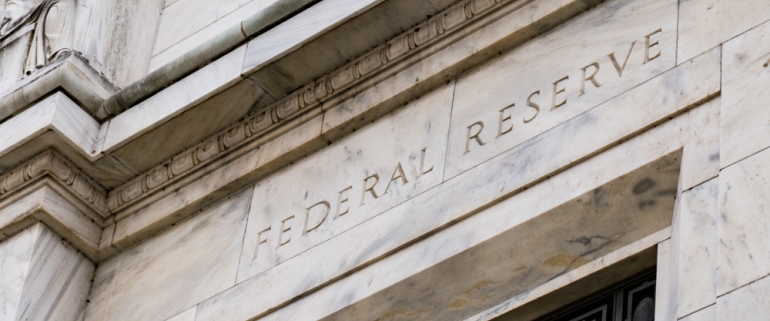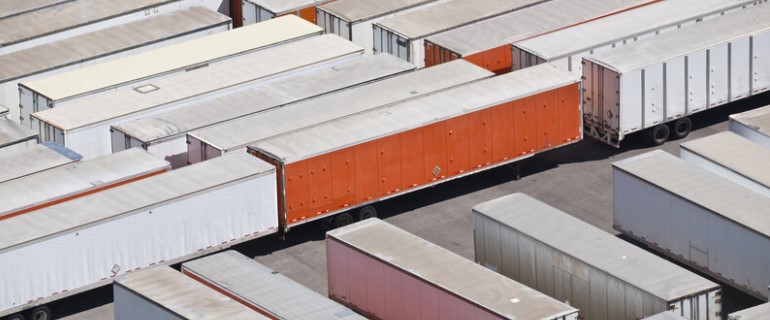Pesky, lingering inflation that is higher than we’ve seen in years, along with six interest rate hikes totaling 375 basis points since the beginning of the year have had varying degrees of impact on all sectors in commercial real estate.
The speculation of further hikes later this year and in early 2023 doesn’t help.
Industrial real estate remains one of the darling sectors, though it is being tested by current economic conditions.
Four industrial real estate professionals, including owners, investors and brokers, three of them based in Chicago and one based in Houston, participated in a roundtable discussion, giving their perspectives on inflation, interest rates and industrial real estate. The participants: Alfredo Gutierrez, Founder, SparrowHawk; Rick Nevarez, Director of Acquisitions, Clear Height Properties; Kelly Disser, Executive Vice President, NAI Hiffman; and Hugh Williams, Principal and Managing Broker, MK Asset Brokerage.
What are the implications of the five 2022 rate hikes on transaction/acquisition activity?
Alfredo Gutierrez: It’s a challenging time as there are more investors stepping to the sideline. This means that if you are selling an asset today you might get three or four offers versus a dozen one year ago. On the buy side, if investors have cash or lines of credit tied to a low rate, they are utilizing their resources. The fundamentals on the income side of the equation, because of rent growth, are still strong—that’s factual. Some are putting down their pencils because they are concerned about the potential for a recession and whether we’ll see the same levels of rent growth.
In reality, cap rates are a function of how much capital there is to invest into something. The question is how much dry powder remains on the sideline. We’re seeing an erosion of capital on the retail side and people starting to get squeezed. However, banks, life companies and institutions still have capital to place, and I believe it will flow into industrial.
Rick Nevarez: Activity has slowed, but it hasn’t come to a grinding halt. Overall, we continue to see deal activity and are expecting a big fourth quarter. It’s like airplane turbulence: some respond with white-knuckle gripping of the arm rest while others acknowledge it’s taking place and go about their business. It’s really a matter of understanding the fundamentals of the real estate and how the current economic environment impacts those fundamentals.
Kelly Disser: It’s an interesting time with different groups being impacted in different ways. Owner occupants, private investors, institutional investors—all have acted or reacted differently. The demand for industrial space and leasing absorption today is still very strong. Inventory/vacancy is at an all-time low. As a result we’re seeing rent growth like we haven’t seen before. In certain underwriting acquisitions, we are seeing the impact of interest rates on values somewhat mitigated by rent growth and rents trending even higher than what we see today. The equation is evolving. The development and investment sales markets have reacted and adjusted. Those with large funds have the ability to remain active and aggressive—and they are distinguishing themselves. Investors/developers who are sourcing capital on a deal by deal basis may be having issues in the current environment.
Hugh Williams: There was a point this summer when large institutional investors essentially said, “pencils down on all deals,” unless it was a perfectly placed asset/tenant combination in the middle of the fairway. Investors and developers are proceeding with haunting caution because at some point the math does not work. You cannot acquire an asset when you underwrite debt costs that are greater than your projected return. That is problematic.
But we need to remember we’ve been in a low-rate environment for a long time, an environment that couldn’t last forever; and there are geopolitical events taking place that are also important considerations. I have heard people say they are pulling back but some of them aren’t sure why. Overall, leasing activity is quite strong, and things are still moving forward particularly in select markets and micro-markets.
How are the rate hikes changing the flow of acquisitions and dispositions, if at all? And are they impacting different size buildings differently?
Nevarez: Interest rate hikes have pushed some buyers and sellers to the sidelines. But we are still buyers, looking at a variety of opportunities including value-add acquisitions. Sometimes you have to tweak underwriting to have a deal pencil out and make sense. Now more than ever, you need to understand ALL elements of the transaction, and what is motivating buyers and sellers.
Gutierrez: The effect based on size is really a case by case situation. But in general, if you had two assets where essential building characteristics except for size were essentially the same, the smaller asset would feel the pinch more. While smaller buildings are more likely to have shorter term leases, it will depend on the tenant roster and the lease terms. At the same time, because the rent roll may turnover more quickly, smaller buildings may be able to adjust pricing more quickly, too.
Disser: Interest rate hikes are impacting the flow of acquisitions and dispositions. The pace has slowed in the second half of 2022 from what we saw the prior 18 months. But it is all relative, the first 18 months coming out of covid we saw activity levels, values and rents not seen before—in Chicago and across the country. An adjustment was needed. There was simply too much money chasing too few assets: the definition of inflation. Impact varies from case-to-case, according to location, submarket, or quality of asset.
Williams: My hypothesis is that if you go to a smaller, non-institutional building, it’s generally a different type of buyer, with a different mentality. For example, an operator like Blackstone is taking the long view. They are likely focused on main and main locations. When they go to build, they are focused on operating their platform as a business, not necessarily the conditions of the moment or focused on a near to short term exit. Smaller owners may be at greater risk—real and emotional—based on being prisoners of the moment (as we all are). The short stroke is big boats are better ballasted against storms. Small boats get tossed about.
In other asset classes—like office and multifamily—some say that activity has slowed as the market looks for a re-set. To what degree is that occurring in the industrial sector, and are there other considerations (i.e., size, etc.)?
Nevarez: It’s really hard to say that any asset class is recession-proof, but industrial certainly is close. If the market was overbuilt, the impact might be different. There may be a scaling back and slight reset of pricing, but it’s not the same as other sectors because demand has been so strong. Our portfolio, for example, is 96% leased due to lack of product in the markets we own and operate in.
Gutierrez: A lot of people have put pens down, so to speak. Unless you need to place capital, you won’t. With some of the overall questions that exist, and fewer offers to consider, there isn’t necessarily a lot of pricing clarity. As 2022 wraps up our volumes will be down, particularly for the second half of the year.
Disser: It is always dangerous to generalize. The idea of a price reset isn’t absolute in industrial, as it may be in other sectors. In the industrial sector I think value equations are evolving, given rent growth. We see absorption, leasing and rental rates continuing to increase. The user/occupier clients of mine generally are operating businesses that are still strong and eyeing expansion. In addition to scrutinizing interest rates, many are watching how lenders behave—as many have slowed loan origination activity. For some groups, the ability to secure the capital for a project in some cases is as much of a question as the cost of the capital. If you lose your equity partner or can’t get a loan—you’re out.
Williams: There is a group that has been waiting 5-6, 10 years for a reset! The sky is continually falling. Say it long enough and eventually you will be right. Pricing may fluctuate from its peak, but I don’t anticipate an incredible swing. The reality is that developers are much more rational today and have been that way for the last decade. What is going on in the interest rate environment forces additional austerity measures onto industrial developers.
All of the various elements at play lead me to believe that the sky will not fall, maybe a little rain, but rainwater is one of the keys to life—ask California.
How are higher interest rates impacting user sales/acquisitions? Are the higher rates making them any more or less likely to look at renting versus owning?
Nevarez: Higher Interest rates make it harder for users to come up with the capital to purchase an asset. Most users would rather place their capital in their actual business operations (machinery, employees, etc.). Current owners may also look at their overall business plan to determine where they may need additional capital and find creative ways on how to get that capital. They look at their actual real estate as an opportunity to raise capital—through a sale leaseback—and to Clear Height (landlords) as a way to get that capital, creating a win-win situation for both parties.
Gutierrez: One of the factors that pushes users to consider an acquisition is the upward trajectory of rental rates. They figure they might as well buy. But in the current interest rate environment, the cost of ownership—if there was an inventory of buildings for users to buy—is up as well.
While there are concerns across the industry about interest rates, inflation and their overall impact, Alfredo Gutierrez suggests that the potential for stagflation would be worse. “If the Fed is going to push us into a recession, put us there and make it short-lived.”
Disser: Everything is getting more expensive across the board; that is why inflation is so crucial at this point in time. I don’t believe the increases in interest rates have impacted user sales whatsoever. The most limiting factor is just availability of space or available options that could be purchased. There is virtually no inventory. I have clients who want to sell their buildings—they need more space—but have no where to go; because there is nothing larger for them to buy. Clearly the higher cost of funds results in larger interest payments, but the demand and growth seems to be greatly outweighing borrowing costs.
Williams: Not everyone needs to own a home, not everyone needs to own industrial real estate. Unless there is a specialized need, most operators should probably focus on their business and not try to get into the real estate game. The other consideration is that because of the overall tightness of the market, it’s hard to make a move—hard to buy a building. For many owner-users real estate is as emotional as it is practical. Those that really want to buy will find a way but my supposition is that things slow on the user front because higher interest rates also affects the entire supply chain of activities within a warehouse as much as the cost of acquiring that warehouse.
Source: REjournals








